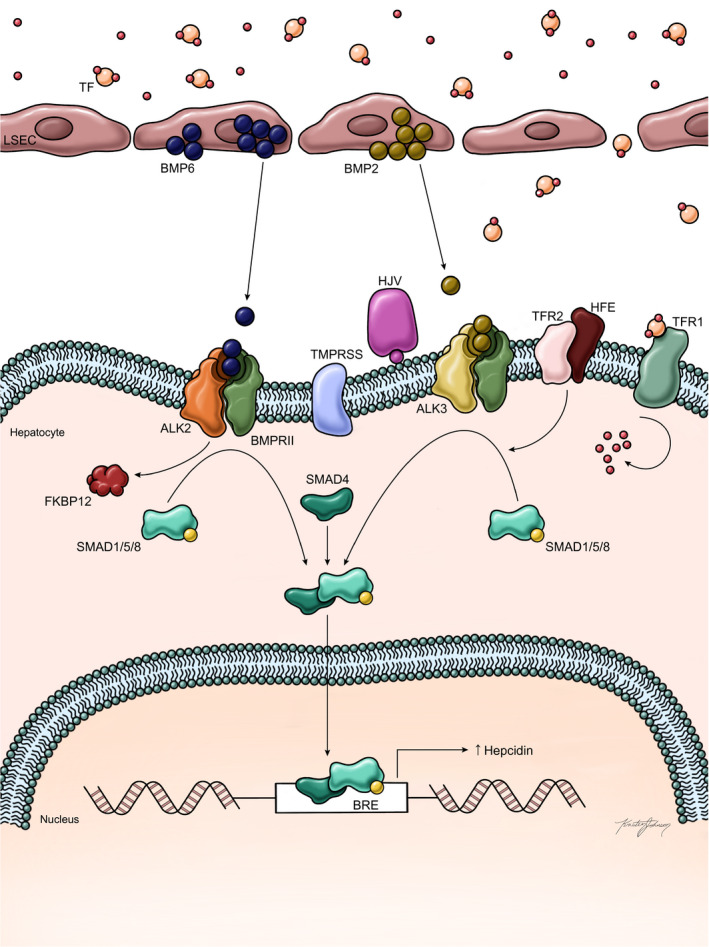FIG. 2.

Regulation of hepcidin expression in the setting of iron overload (adapted from Camaschella et al.( 2 )). It is proposed that tissue iron stores are sensed by liver sinusoidal‐lining endothelial cells, which secrete BMP6 (and to a lesser extent BMP2) in response to increased storage iron. Circulating iron is sensed by a complex interaction among HFE, TFR1, and TFR2 in conjunction with HJV. BMP6 and BMP2 bind to the receptors ALK2 and ALK3, respectively, resulting in SMAD1/5/8 phosphorylation, forming a complex with SMAD4 that enters the nucleus and increases hepcidin transcription through promoter binding. HJV as a BMP co‐receptor and TFR2 also contribute to ALK3‐dependent SMAD phosphorylation. Similarly, the interaction among HFE, TFR1, TFR2, and HJV also contributes to SMAD1/5/8 phosphorylation and ultimately increased hepcidin expression. Thus, the response to increased circulating and tissue iron is increased hepcidin production, which then binds to ferroportin in both duodenal enterocytes and macrophages, leading to reduced iron export from cells and decreased iron absorption in the duodenum. In HFE hemochromatosis, the mutant HFE is trapped intracellularly and leads to a dampened hepcidin response to circulating iron, resulting in inappropriately high iron absorption in relation to body iron stores. Abbreviations: LSEC, liver sinusoidal‐lining endothelial cell; TF, transcription factor.
